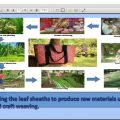Find a business opportunity in every market need.
One of the first things you should remember in trying to identify business opportunities is that all enterprising ventures answer, in one way or another, a particular human need. Whether it is a product or a service, it must respond to what the buyers need or want.

Begin by studying your own community, village, or barangay. Is it self-sufficient or do the residents have to go out of their way to buy pandesal, cooked food, or cooking oil? Or to have their shoes repaired, their cars washed, or their homes pest-protected?
Study demand and supply gaps.
Find out how the present demand for certain products or services in the community is being met. Is demand for some items being filled by local suppliers or producers? Find out whether or not local supply can cope with or totally satisfy local demand. If not, this may suggest that there is room for still one more in the business.
To illustrate: Let us suppose you have learned that there is only one hollow block maker or retailer in your community and that he can supply only about half of the community’s needs. On top of this, you notice a boom in the construction business. You see many new houses and commercial buildings being built. From these observations, you see a room for a new entrepreneur to bridge the gap between supply and demand.
That new entrepreneur can be you! However, you don’t just study the hollow block demand and supply only. It will be useful, too, to look at the situation in the case of other construction materials (for example, steel works, fixtures, grills, door jambs, cement, etc.) or services (plumbing, painting, landscaping, interior designing) to meet related construction needs.
Study import-export movements.
Again, perhaps a number of products are being supplied by producers or suppliers outside the community or imported from other countries. Study these imports. Possibly, given the resources, you can produce these. You may not be able to produce the same high quality as the imported ones. However, if you can produce at a much lower cost and sell the products cheaper, you have a competitive advantage there. You may find that your products though cheaper and of lower quality will also be attractive in the market. For example, locally cured ham, corned beef, tocino and longganisa have become acceptable substitutes for imported processed meats.
You may also take a look at products that the community is selling outside or is exporting. Usually, these products are exported in raw or semi-finished form. For instance, rattan poles grown in the community are normally sold to rattan furniture makers and processors outside the community. As a potential entrepreneur, look for ways of increasing the value of rattan poles before selling or exporting them. If you succeed, then you can be in business.
One way of increasing the value of rattan poles is to process them into a form that can readily be used by the buyers. How? By pre-cutting them into the desired sizes, by treating them with chemicals to prevent deterioration, by varnishing them or painting them. Of course, the best way would be to manufacture rattan furniture or rattan handicraft items like trays, boxes, coasters, etc. You can earn better this way.
Capitalize on available resources.
The availability of certain resources in an area can suggest business opportunities. These resources may be in the form of raw materials, skills, information or technology.
Consider the following:
Raw materials. Identify the materials that are native to and abundant in an area. Study how to make money out of these either through gathering the materials, trading them, partially processing them, or manufacturing finished products out of them.
Local skills. Are specialized, traditional skills available in the community? Can these be used for commercial purposes? Study these skills for possible upgrading and innovation. The availability of skilled weavers in a community, for example, can be tapped by organizing a weaving, handloom, or handicraft industry.
Examples of traditional skills on which progressive enterprises have been built are: shoemaking in Marikina City, slipper-making in Liliw, Laguna, woodcraft in Paete, Laguna, jewelry making in Meycauayan, Bulacan, and “antique” furniture making in Betis, Pampanga.
Industry information – Reading technical and business journals will keep you updated on business ideas. Newsweek Magazine, for example, has a regular feature on new products and techniques. Local publications like MagNegosyo of TLRC and Entrepreneur Philippines Magazine give information that inspire new entrepreneurs. Check out, too, the business features section of Philippine Daily Inquirer, BusinessWorld, and most other dailies. Online, there are sites that will be useful, notably the DTI website, E-Yellow Pages, the UP ISSI website, etc.
Many private and government institutions conduct periodic studies which review the growth and performance of certain industries. Such studies discuss a given industry’s problems and prospects for growth and expansion. Obviously, they would provide useful information that will help you make wise investment decisions.
For example, the following were identified by the DTI as export winners in 2002:
o Processed fruits
o Marine products (fresh/frozen fish, shrimps)
o Carrageenan and seaweeds
o Electronics (components and parts)
o Metals (automotive and parts)
o Garments
o Furniture
o Jewelry (fine and custom)
o Holiday decor (Christmas, Easter, Halloween)
o Ceramics (decorative and tableware)
o Basketware
o Marble and marblecraft
o Construction services
o Information technology services
o Professional consulting services
A more updated priority list is given in the National SME Agenda prepared in 2004:
o Food
o Organic and natural products
o Marine products
o Wearables, including costume and fine jewelry, and footwear
o Leathergoods (handbags, belts, travel goods, gloves)
o Home furnishings
o Construction materials
o Micro-electronics
o Information Technology services
o Motor vehicle parts and components
If you engage in one of these industries, you will receive high priority in government incentives and support programs. That means you get the first crack at credit, training, and technical assistance.
Technology. Look out for advances or improvements in technology. These might be useful in upgrading or improving traditional production systems or starting a new business altogether. For example, research and development in aquaculture has made prawn and bangus culture a viable business venture. Similarly, R & D in waste utilization has given rise to new products like wood particle boards, organic farming, and volcanic ash ceramics. Canned laing, and vacuum-fried tahong are also new products developed by DOST. And of course, e-commerce has opened up new web-based businesses and new ways of doing business.
Adapt, complement, reshape.
Be observant. What are the people around you doing? Can you pick up something from it – with some modification?
Get familiar with the current economic situation in communities comparable to where you live. You can be inspired by a number of projects which have worked in these areas and which you can adapt to your own local situation. Don’t just copy and imitate. Innovate! Innovating is improving on someone else’s idea to make it work for you. This might mean reshaping or repackaging goods or services to fit or match present trends or styles. Creative ideas may add or change a product’s features and thus add more to its benefits.
For example, if you live in the province, you might wish to look at a project that has succeeded in the city. Internet cafes, for instance, which first proliferated in Metro Manila, are now being set up in the regions. Fads like string-it-yourself bracelets and necklaces, color-it-yourself ceramics, print-while-you wait shops, and badminton courts can also catch the imagination of provincial markets.
Explore forward-backward industry linkages.
No doubt, there are a number of industries in your community. Find out what possible business ideas you can pick up from what already exists. For example, a backward linkage of a meat processing plant in your area may spur agribusiness projects like poultry or hog raising, transport services, supplies required for meat processing. Consider also going into distribution of poultry feeds, egg trays and other inputs to the poultry raisers in the community. A forward linkage, on the other hand, would explore opportunities in meat packaging, subcontracting, or trading and distribution of finished products.
Screen and select the best investment alternative.
You may be able to identify a number of alternative business ideas. You may then narrow down the choice to two or three possible projects, maybe food, garments or handicraft. But since you have limited resources, you can’t go into all three projects at once. You will have to screen and select the best one.
Source: Your Guide to Starting a Small Enterprise -dti.gov.ph




who is the author of this article? thank you for reference only.
I totally agree that whatever business you want to be involved in, it must respond to what the buyers need or want. I’m glad I found this article and this website (https://hundredacreconsulting.com/) to help me with my franchising and business goals
like